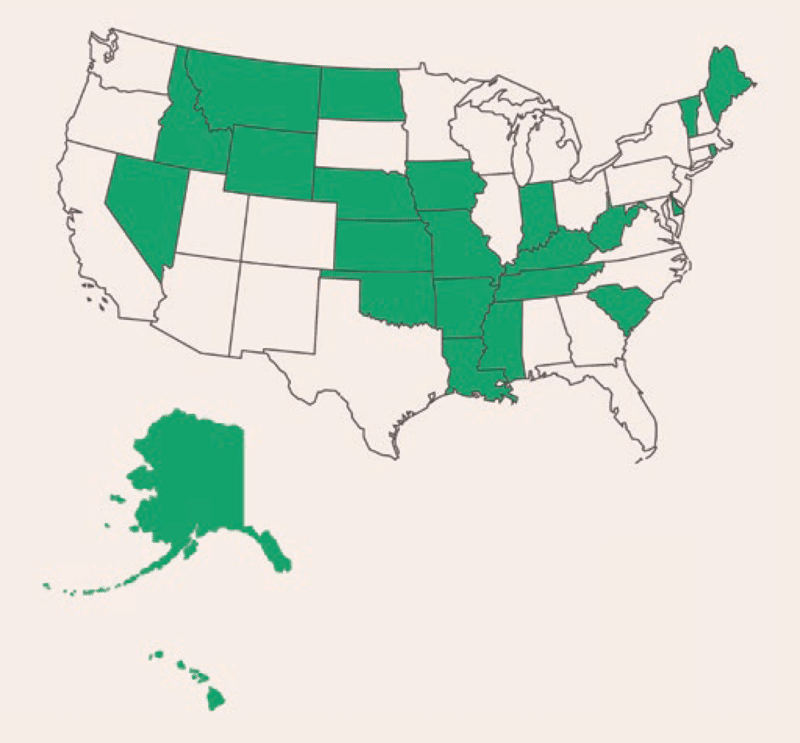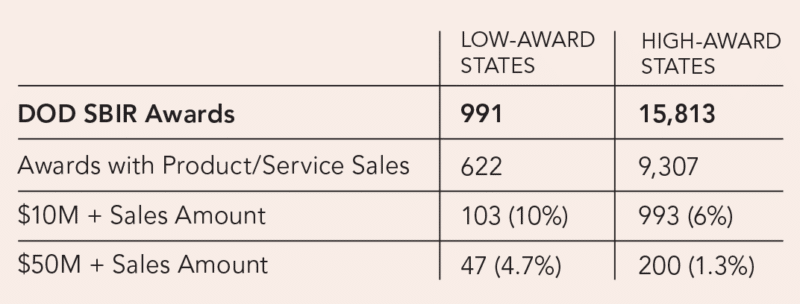A Catalyst for Innovation in the Flyover States
The US government’s Small Business Innovation Research program and the related Small Business Technology Transfer program (which we’ll refer to collectively as “SBIR”) provide funding to small businesses nationwide to develop new technologies and innovations for commercial and government use. SBIR programs originated with the Small Business Innovation Development Act of 1982, passed by Congress to harness the innovativeness of small businesses to help the federal government address high-priority technology needs and to stimulate the national economy. Since 1982, the government has awarded approximately $50 billion in SBIR funds to over 27,000 small businesses. Annual expenditures currently are approximately $2.6 billion.
In order to strengthen the innovation economy nationwide and ensure that SBIR funding is equitably distributed, Congress has directed all SBIR-funding agencies to attempt to engage companies located in “underserved” states. These are states that historically have received fewer SBIR awards than others. Most are rural, with smaller populations, and many are in the interior of the country—the so-called flyover states. Approximately half of all states fall into this category, although the definition of underserved has varied over time and by federal agency. In response to congressional direction, federal agencies have developed active SBIR outreach programs. The primary purpose of these outreach programs is to help companies in underserved states and in underserved socioeconomic communities to compete successfully for SBIR awards and to commercialize the resulting innovations.

Many academic studies and federally commissioned surveys have been conducted to determine SBIR success. They have generated voluminous evidence demonstrating that the SBIR programs are indeed meeting their objectives. Our team’s research project compared the commercialization success of SBIR projects funded by the Department of Defense (DOD) in underserved states with those in higher-award states. We used 60 different measures to compare the relative success of the two cohorts. These measures included three definitions of underserved, four categories of sales for each definition, and five measures of comparison for each sales category.
Our analysis showed that underserved states consistently outperformed higher-award states in commercializing the outcomes of their DOD SBIR projects. Underserved states generally did better in total sales, sales to the private sector, sales to the military, and sales of research and development services for specialized applications. They also had larger median and mean sales figures, as well as greater rates of awards achieving sales of at least $10 million, and sales of at least $50 million. In fact, in 20 of the 24 comparisons of awards achieving these high-level sales, the underserved states were superior.

The reasons for underserved states’ superior performance are unclear. But one explanation may be that these sparsely populated areas will have fewer technology firms, which may translate to more focused economic development and SBIR outreach efforts by both federal and state agencies.
These results strongly support the argument that SBIR efforts to assist firms in underserved states are a sound investment and contribute to improved geographic distribution of economically valuable innovative activities. But they raise challenges to well-accepted theories of innovation. For example, “innovation cluster” theory emphasizes the competitive advantages of certain favored locations—those with geographic concentrations of interconnected technology firms located near major research centers and having ready access to venture capital, suppliers, customers, and complementary industries. This widely accepted theory would predict that the states with more, and higher-award, SBIR grants would outperform the rest. Apparently they do not, a result suggesting that innovation cluster theory does not fully capture innovation occurring in the United States today. While we do not yet understand the reason that underserved states are such strong performers, the SBIR experience does suggest that well-designed approaches targeting certain industries and regions can successfully contribute to strong and more equitably distributed economic performance.
